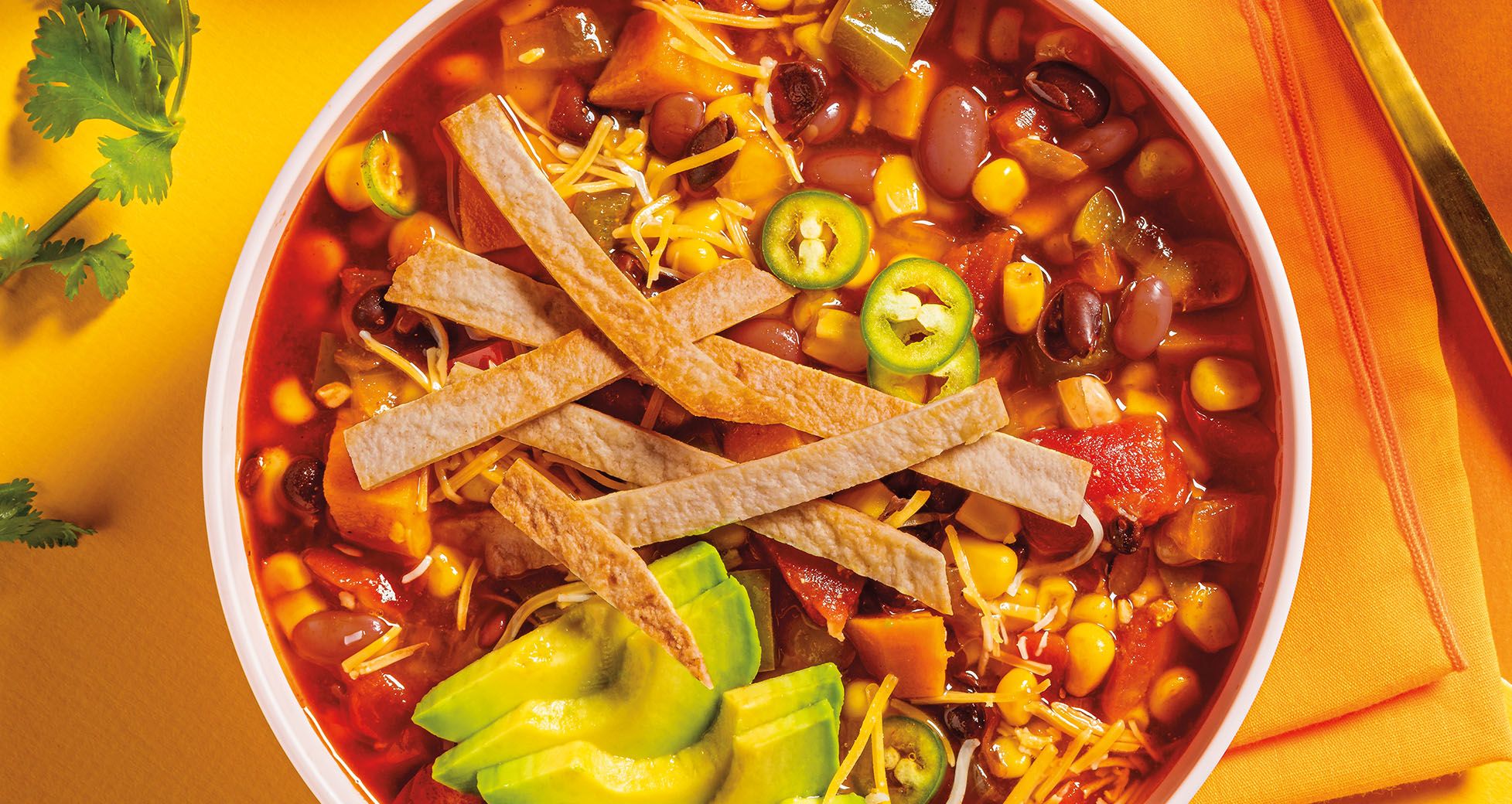Spilling the Beans
Nothing beats beans when it comes to being budget-friendly and high in protein! Read this guide to learn about their benefits and how to cook them.

A Powerful Protein
Beans are a great plant-based and affordable protein option. In fact, one serving of beans provides around seven grams of protein!
Eating beans also helps to take your dollar further. Replacing half your meat protein with beans in recipes like tacos and chili can stretch your servings for a fraction of the cost.
Full of Fiber
The average adult in America only eats about half of the recommended 20 to 30 grams of fiber daily. This can be combated by beans, which are rich in both non-soluble and soluble fiber.
Non-soluble fiber helps to lower bad cholesterol, which can reduce the risk of heart attack and stroke. Soluble fiber aids in digestion by feeding the good bacteria in your gut.
Canned vs. Dried
Full Circle canned and dried beans are both Dietitian Pick items. When deciding which one to use, think about what is most important to you.
Price: Dry beans are more affordable than their canned counterpart. One cup of dried beans will yield 3 cups of cooked beans while one 15-ounce can of beans (drained) contains 1 1/2 cups cooked beans. So if you are pinching pennies, opt for dried beans.
Time: Canned beans cook much faster than dried. Typically dried beans need to soak overnight and then cook for a few hours the next day whereas canned beans can be ready to eat in minutes. If you're cooking dry beans, make more than you need and freeze the extra to make prep time quick and easy for your next meal.
Nutrition: Both canned and dried beans can be healthier options. Dried beans allow for you to add flavor yourself by slow cooking with blends of herbs and spices. Look out for added sodium and sugar in canned beans. Drain and rinse canned beans to remove some of the sodium or look for the Dietitian Pick icon to find canned beans with 240 milligrams or less of sodium and 5 grams or less added sugar.
Bean Recipes
View All Bean RecipesPrepping Dried Beans
Sort Things Out
Start by examining the beans and removing any that are discolored, as well as any rocks or debris that managed to find their way into the bag.
Next, add your beans to a large bowl and fill with water. Remove any beans that float to the surface. Drain water and rinse beans.
To Soak or Not To Soak
While not absolutely necessary, soaking dried beans will make them more tender, quicker to cook and easier to digest.
Add 1 lb. beans and 8 cups water to a large pot. Cover and soak a minimum of 6 hours or overnight. Drain and rinse.
If you’re in a hurry, cover pot and bring to a boil, then remove from heat and let rest 1 hour. Drain and rinse.
Add Ingredients
Want more flavor from your beans? Halved onions and chili peppers, garlic cloves and fresh or dried herbs are all great options. Now is the time to add them to the pot along with 6 cups water (or stock) and 2 tsp. salt.
Cooking Dried Beans
Tried-and-True
Simmer, uncovered, until tender, 1-1 1/2 hours (2-3 hours for unsoaked beans). Add more water if necessary.
Take Things Slow
Dried beans also can be prepared in a slow cooker. Because they cook for a longer period, most varieties don’t need to be soaked. Add unsoaked beans and remaining ingredients to slow cooker and cook on low 6-8 hours.
Under Pressure
Need beans ASAP? Add unsoaked beans, 1 tbsp. oil and remaining ingredients to multicooker or pressure cooker. Lock and cook on high 20-40 minutes (depending on type of bean). Let pressure release naturally before opening.

Trying to Eat Healthy on A Budget?
The Healthier Habits community can help. Check out our Dietitian Pick items, including Full Circle canned and dried beans. Just look for the thumbs up icon in stores and in the app! And when you join free the community, you'll gain access to Dietitian Pick recipes and exclusive digital coupons.









